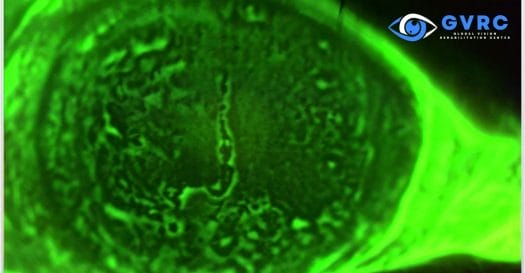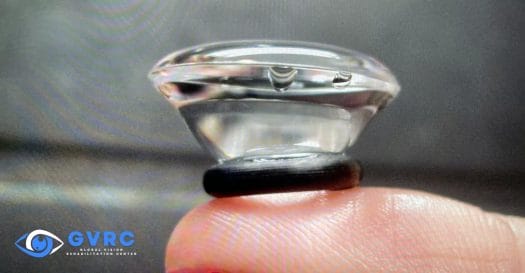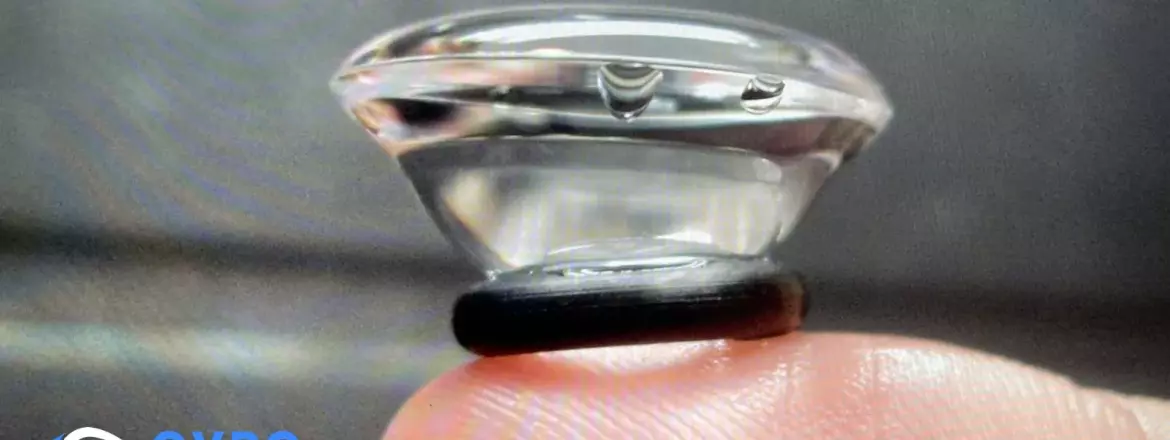Scleral Lenses: The Ultimate Dry Eye Syndrome Solution
Summary Overview Takeaways
Dry Eye Syndrome (DES) is a chronic and often frustrating condition affecting millions of individuals worldwide. It’s characterized by insufficient or poor-quality tears, leading to symptoms such as dryness, irritation, light sensitivity, and even blurred vision.
Conventional treatments, including artificial tears and medicated eye drops, often offer temporary relief but don’t address the root cause of the issue. This is where Scleral Lenses come into the picture as a revolutionary treatment option. These large-diameter gas-permeable lenses vault over the cornea, creating a saline-filled reservoir that keeps the eye continuously hydrated and comfortable.
Not only do Scleral Lenses offer sustained relief from DES symptoms, but they also provide excellent vision correction, especially beneficial for those with irregular corneas. The fitting process for Scleral Lenses, while slightly more involved than regular contacts, ensures a perfect fit for maximum comfort and effectiveness.
At the Global Vision Rehabilitation Center, Dr. Edward Boshnick, a pioneer in vision rehabilitation, employs his extensive expertise in fitting Scleral Lenses for DES patients. The many success stories from his patients testify to the transformational impact these lenses can have on those struggling with DES.
In this article, we will delve deeper into understanding DES, the magic of Scleral Lenses, the process of getting fitted for these lenses, and how they compare with other treatment options.
Introduction
Dry Eye Syndrome (DES), a common and often debilitating condition, affects millions of people worldwide. It can disrupt daily life, causing discomfort, vision problems, and often a significant decrease in quality of life. However, there is a little-known solution that provides relief for those grappling with DES – Scleral Lenses. These specially designed contact lenses are a game-changer in the field of optometry, offering new hope for people with DES.
DES is a chronic condition characterized by insufficient tear production or rapid tear evaporation, leading to inadequately lubricated eyes. This can result in a multitude of symptoms including burning or scratchy sensations in the eyes, redness, sensitivity to light, and blurred vision. The causes of DES are varied, ranging from aging and certain medical conditions to environmental factors like dry air or wind.
In recent years, Scleral Lenses have emerged as an effective treatment for DES, providing a unique and innovative solution for those who have found little relief from traditional remedies. These lenses are designed to vault over the cornea, resting on the white part of the eye, known as the sclera. This creates a reservoir of fluid that continuously bathes and nourishes the eye, alleviating the symptoms of DES.
Dr. Edward Boshnick, a pioneer in the field of scleral lens technology, has been instrumental in raising awareness about these lenses and their transformative potential for DES sufferers. Through his Miami-based clinic, Dr. Boshnick has fitted countless patients with Scleral Lenses, significantly improving their quality of life.
In this article, we delve deeper into the benefits of Scleral Lenses for DES, how they compare with other treatments, and how one can get fitted for these game-changing lenses.
Understanding Dry Eye Syndrome

Dry Eye Syndrome is a common condition affecting an estimated 16 million adults in the United States alone, according to the National Eye Institute. The real-world impact of this syndrome can be debilitating, with symptoms that interfere with daily activities like reading, driving, working on a computer, and even just enjoying the outdoors.
DES occurs when the eyes do not produce enough tears, or the tears they do produce evaporate too quickly. Tears play a crucial role in maintaining eye health. They provide lubrication, reduce the risk of eye infections, wash away foreign matter, and keep the surface of the eyes smooth and clear. Any imbalance in the tear system can lead to dry eyes.
The symptoms of DES can range from mild to severe and may include a stinging or burning sensation in the eyes, redness, sensitivity to light, difficulty wearing contact lenses, and blurry vision. In severe cases, DES can lead to corneal damage, which can result in impaired vision.
DES can be caused by various factors. Aging is a common one, with most people over the age of 65 experiencing some symptoms of dry eyes. Certain medical conditions like rheumatoid arthritis, diabetes, and thyroid problems can also increase the risk of DES. Environmental conditions such as exposure to smoke, wind, or dry climates can cause tears to evaporate more quickly, leading to dry eyes. Long-term use of contact lenses and refractive eye surgeries like LASIK can also contribute to DES.
While DES is often a chronic condition, various treatments can manage the symptoms and improve the quality of life for those affected. One such treatment that is proving particularly effective is the use of Scleral Lenses.
The Magic of Scleral Lenses

While the name ‘Scleral Lenses’ may be unfamiliar to many, these specialized contact lenses are revolutionizing the treatment of DES. Their unique design and function offer significant advantages over traditional contact lenses and other DES treatments.
A Scleral Lens is a large-diameter, gas-permeable contact lens that rests on the sclera and creates a tear-filled vault over the cornea. The lens essentially acts as a new, smooth, refractive surface for the eye, improving vision for people with corneal irregularities. Moreover, the fluid reservoir between the back surface of the lens and the front surface of the cornea provides constant hydration, alleviating the symptoms of DES.
One of the unique benefits of Scleral Lenses is that they can be tailored to each patient’s unique eye shape and prescription, ensuring optimal fit and visual clarity. The lenses are also surprisingly comfortable to wear, as they do not touch the sensitive cornea, reducing irritation.
Furthermore, Scleral Lenses provide more prolonged relief than many traditional treatments. For example, artificial tears may offer temporary respite from DES symptoms, but their effects are fleeting. In contrast, Scleral Lenses provide constant and consistent relief throughout the day.
Noted optometrist Dr. Edward Boshnick has been at the forefront of utilizing Scleral Lenses for DES treatment. His work at the Global Vision Rehabilitation Center has provided relief to countless patients who had previously found little or no respite from other treatment options.
Dr. Edward Boshnick and His Work with Scleral Lenses
Dr. Edward Boshnick, a well-respected optometrist based in Miami, Florida, has been at the forefront of introducing Scleral Lenses as a groundbreaking solution for Dry Eye Syndrome. With more than three decades of experience in optometry, Dr. Boshnick is a leading authority in his field, known for his dedication to providing patients with the best eye care possible.
After earning his doctorate degree from the Southern College of Optometry, Dr. Boshnick completed a residency program in children’s vision at the Illinois College of Optometry. Over the years, he has specialized in the fitting of specialty contact lenses to treat a variety of eye conditions, including DES, keratoconus, post-corneal transplant, and post-LASIK complications.
At the Global Vision Rehabilitation Center, Dr. Boshnick employs cutting-edge technologies like Cirrus Optical Coherence Tomographer, Specular Microscopy, and Computerized Corneal Topography to diagnose eye conditions and customize scleral lenses for his patients.
Scleral lenses have revolutionized the way DES is treated. By creating a reservoir of saline solution over the cornea, these lenses ensure that the eyes stay lubricated throughout the day. This constant moisture provides relief from the symptoms of DES and helps improve the overall eye health of patients.
Countless patients have benefitted from Dr. Boshnick’s expertise in fitting scleral lenses. These patients, who had previously struggled with severe symptoms of DES, have experienced significant relief after being fitted with these custom-made lenses.
Comparing Scleral Lenses with Other Dry Eye Treatments
While various treatments exist for Dry Eye Syndrome, Scleral Lenses have proven to be remarkably effective, often outperforming other treatments in terms of both symptom relief and patient satisfaction.
Traditional treatments for DES range from lifestyle changes and over-the-counter remedies like artificial tears to prescription medications and surgical interventions. However, these treatments often fail to provide lasting relief. For instance, while artificial tears can temporarily alleviate symptoms, they need to be frequently applied, and their effect is fleeting.
Prescription medications, on the other hand, can help increase tear production or reduce inflammation, but they may also have side effects. Some people with DES may undergo minor surgical procedures, like punctal plugs, which involve blocking the tear ducts to reduce tear loss. While these methods can provide some relief, they don’t address all symptoms or causes of DES.
Scleral Lenses offer several advantages over these treatments. They provide continuous hydration to the eyes, which alleviates symptoms throughout the day. Unlike artificial tears, the effect is not temporary and does not require frequent application. Since these lenses are custom-made for each patient’s eyes, they also provide superior comfort and visual acuity.
Given their effectiveness, it is unsurprising that Scleral Lenses are rapidly becoming the preferred treatment for DES, particularly in severe cases or where other treatments have failed. The lenses have also shown remarkable success in managing other ocular surface disorders and corneal irregularities.
How to Get Fitted for Scleral Lenses

This is a photo of a large diameter and very profound Scleral lens that we designed to fit over an eye with a very advanced keratoconic cornea. Notice that this lens is filled to the very top with sterile unpreserved saline solution. This highly customized lens does not touch the front surface of the cornea. Instead it vaults over the compromised cornea and rests on the white portion of the eye ( the sclera). The space between the back surface of the scleral lens and the cornea is always in a liquid environment. For this reason a well designed and fit scleral lens is medically indicated for a patient suffering from chronic dry eye disease. Very grateful for this amazing life changing technology.
Getting fitted for Scleral Lenses is a straightforward and painless process. It begins with a comprehensive eye examination, including a detailed assessment of your eye’s surface and measurements of your cornea. This data is used to design lenses that perfectly match the unique shape of your eyes, ensuring maximum comfort and visual clarity.
Dr. Boshnick and his team at the Global Vision Rehabilitation Center use state-of-the-art technologies to ensure an accurate and precise fit. These include Computerized Corneal Topography to map the surface of your cornea and Specular Microscopy to examine the corneal endothelium.
Once your custom lenses are ready, you’ll have a fitting session where you’ll be taught how to insert, remove, and care for your new lenses. It might take some time to get used to handling the lenses, but with a little practice, it becomes a simple routine.
As part of your follow-up care, you’ll have regular check-ups to ensure your lenses continue to fit well and provide the necessary relief from DES symptoms. This ongoing care ensures that your scleral lenses continue to provide optimal vision and comfort.
Conclusion
Dry Eye Syndrome is more than a mere inconvenience. It’s a chronic condition that can significantly impact a person’s quality of life, turning simple everyday tasks into a challenge. However, with the advent of Scleral Lenses, a ray of hope has emerged for those struggling with DES.
These custom-designed lenses have proven to be a game-changer, offering a unique solution that addresses the root cause of the problem rather than just managing the symptoms. Scleral Lenses provide a level of comfort, visual clarity, and lasting relief that other treatments often fail to achieve.
Experts like Dr. Edward Boshnick are playing a crucial role in bringing this innovative solution to those who need it the most. Through his dedicated work at the Global Vision Rehabilitation Center, many have found relief from their DES symptoms and regained control over their lives.
So, if you’re struggling with Dry Eye Syndrome and have found little or no relief with traditional treatments, it might be worth considering Scleral Lenses. Consult with a qualified optometrist like Dr. Boshnick, and explore how these lenses can transform your experience with Dry Eye Syndrome.
For more information, consider checking out a comprehensive guide on scleral lenses for Dry Eye Syndrome.
Frequently Asked Questions (FAQs)
What is Dry Eye Syndrome? Dry Eye Syndrome (DES) is a chronic condition characterized by inadequate tear production or poor-quality tears, leading to eye discomfort and visual issues. More about the condition can be read on our website.
What are the symptoms of Dry Eye Syndrome? Common symptoms include a gritty or sandy feeling in the eye, redness, itching, blurred vision, and light sensitivity. Find more detailed information about the symptoms here.
What are Scleral Lenses? Scleral lenses are a type of contact lens that vault over the cornea and rest on the white part of the eye (the sclera). They are particularly effective in treating conditions like DES. Learn more about Scleral lenses on our website.
How do Scleral Lenses help in managing Dry Eye Syndrome? Scleral lenses provide a reservoir of saline solution that bathes the eye, providing continuous hydration while wearing them. This hydration significantly alleviates DES symptoms. More on how Scleral Lenses help can be found here.
Who is Dr. Edward Boshnick? Dr. Edward Boshnick is a highly experienced optometrist specializing in vision rehabilitation, including the use of Scleral Lenses for managing DES. Know more about Dr. Boshnick here.
How are Scleral Lenses fitted? The fitting process for Scleral Lenses involves taking detailed measurements of your eye to create a custom-designed lens. The process is detailed on our website.
How do Scleral Lenses compare with other Dry Eye treatments? Compared to conventional treatments, Scleral Lenses address the root cause of DES and provide more long-lasting relief. Read more about this comparison here.
Are Scleral Lenses comfortable? Yes, most patients find Scleral Lenses to be quite comfortable as they do not come into contact with the cornea, reducing the chances of irritation.
Can Scleral Lenses improve my vision? Yes, besides treating DES, Scleral Lenses also provide excellent vision correction, especially for individuals with irregular corneas.
Where can I get fitted for Scleral Lenses? You can get fitted for Scleral Lenses at the Global Vision Rehabilitation Center under the expert guidance of Dr. Edward Boshnick. Contact us here to schedule an appointment.

